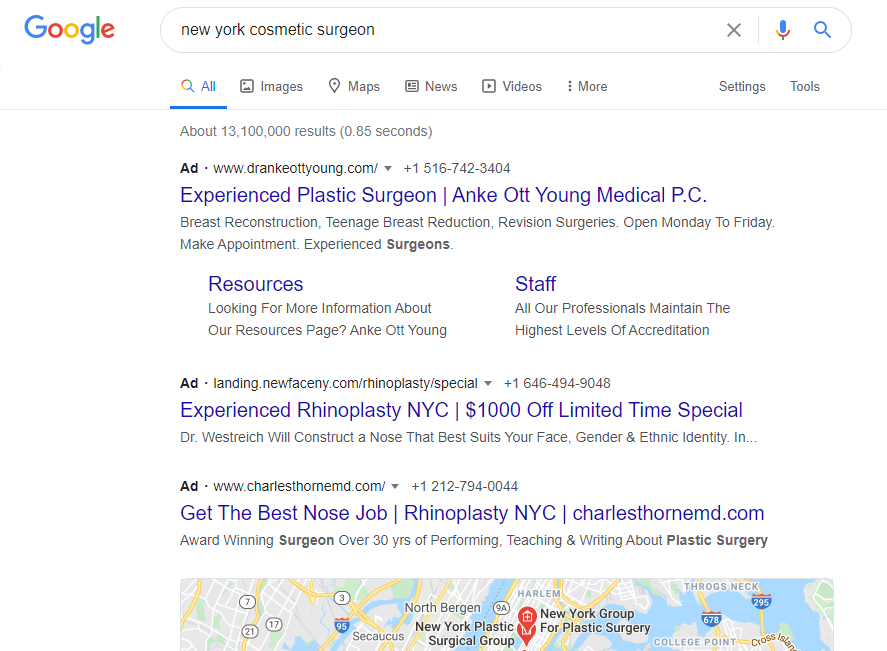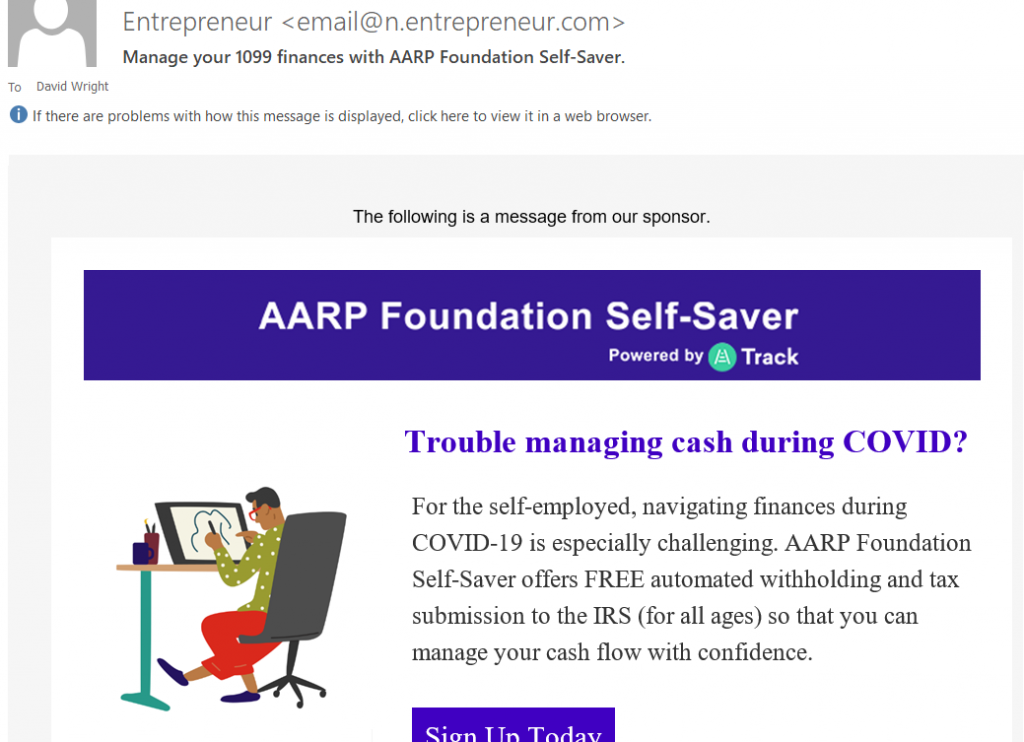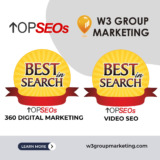Pay-Per-Click Advertising – PPC and More
Online Display and Pay-Per-Click (PPC) Advertising
Online Display or PPC advertising is one of the most effective ways of acquiring new customers fast. How much money should you invest in online ads?
One of the best ways to drive traffic to your website is using online display advertising and remarketing, but it can get very expensive, very quickly. How can you take advantage of Google Ads, Facebook, Twitter, and other online advertising platforms without breaking the bank?
Do you ever visit a website or brand and then start seeing advertising for it everywhere you visit on the internet? That’s not a coincidence. All sorts of businesses of various sizes are using online advertising and remarketing to serve you advertising based on your online activities. Perhaps you will not convert after the first impression, but online ads let you keep your brand top of mind. Combined with strong SEO and consistent email campaigns you can create a surround-sound approach to getting a prospect to convert. It’s an exceptionally powerful tool but it can quickly become overwhelming to manage and expensive, particularly if you don’t have the expertise to manage it well.
That’s where W3 Group Marketing can help. Our online advertising specialists will work with you to:
- Develop an online display strategy with the right channels customized specifically for your business goals
- Establish the right budget and the key performance indicators (KPI) that will tell you when you spend is working and when it’s not
- Develop a testing strategy so you can test which messages are working best on the various platforms and adjust the advertising spend accordingly
- Develop video and interactive messaging that will provide powerful display ads on platforms like Facebook, Instagram, and YouTube
- Integrate all of your offline and online channels to get that reaches your prospects wherever they may be and drives them to convert
Let’s get started customizing an Online Advertising Strategy that’s right for you.
One of the fastest ways to start attracting more clients, patients, or customers is pay-per-click advertising. Also known as PPC, you as the advertiser pay a certain amount each time someone clicks on your ad.
Should I use pay-per-click advertising?
That depends. PPC advertising is one of the fastest ways to acquire new customers. Once your ad campaigns are approved, your ads can start showing in as little as 15 minutes or so. The downside is that PPC can get expensive fast, especially if you don’t know what you’re doing. You’ll need to test different headlines, ad copy, landing pages and more to get it right and improve our ROI.
What do pay-per-click ads look like?
On Google, you’ll see ads at the top of the page for many searches. There’s the word “Ad” in bold just before each advertisement. Hint: If there are no ads, that might be a sign that it’s not a “money keyword” – otherwise businesses would be bidding on getting their ads there.

How much does it cost per click?
For the New York cosmetic surgeon example above, the average cost per click is about $7.80, and the search volume is about 22,000 searches per month.
That depends on an number of factors. Competition is an obvious one. The more competitive the keyword, the higher the Cost Per Click (CPC). Also, the value of a client or customer to the advertisers is a factor. Some of the higher rates per click are in the legal, medical, business software, real estate, home improvement and insurance industries. The value of a client in these industries can be quite high, so businesses are willing to pay a lot per click to get a new customer, patient or client.
A few of the most expensive keywords as of this writing include Houston maritime attorney (approx. $1,090 per click), California auto accident lawyer (about $475.00 per click), Children’s hospital emergency room near me ($60.00 per click), Sell house fast Austin ($95.00 per click), AC repair Coral Springs FL ($320.00 per click), Painless dent repair Denver Colorado ($45.00 per click), and compare vehicle insurance ($280.00 per click).
The cost per click examples above will vary due to a number of factors including any seasonality, time of day (keywords may be slightly less competitive later in the day, after some advertisers have exhausted their daily ad budget), geolocation, and other factors.
How much is a click worth to your business?
Of course you want to pay what you need to bring in a customer, but you also want to make sure it’s profitable. Not every click will result in a sale, so you need to know your average conversion rate (the percentage of visitors to your site who become paying customers), your average sale price, your profit margin, your customer lifetime value, and other Key Performance Indicators (KPIs) to make sure that you don’t spend more than you make. After all, you’re advertising to attract more customers and grow your sales, but you also want to make sure it’s profitable.
So let’s say you’re paying for ads to drive 100 visitors per month to your site on a particular keyword. Out of 100 visitors, you get ten appointments, and three of those become paying clients. That’s three customers per 100 visitors. Let’s say (for the sake of simple math) you’re paying $10 per click. So it costs you 100 x $10.00 or $1,000.00 for those three customers. Not counting labor and overhead costs, sales commissions, cost of goods sold, etc.), you’re paying $333.33 per customer. If you’re selling a $50.00 product, you’re likely losing money. However, you also have to take the customer lifetime value into account. If each of those customers, on average, buys once a month, that’s $600.00 per year in sales, or $1200.00 over two years. So even if the initial acquisition is a loss, you can make a profit by acquiring the customer, not just the sale.
This varies greatly from industry to industry, and even from one business to another. You’ll have to do the math for your own business and determine whether pay-per-click advertising is a viable option for your business.
If you’re using a marketing agency to manage your ads for you, you’ll need to pay them as well. Some agencies charge a flat rate per month for managing your ads. More commonly, though, is a percentage of your ad spend, which can range from 15% to over 50% of your ad spend. So whether your $10 per click includes the ad spend and the agency management fee, or there’s a fee on top, you’ll need to account for that to determine how profitable your pay-per-click advertising campaigns are.
When choosing a marketing agency to manage your PPC ads, the percentage they charge isn’t always an indicator of how good they are. Some agencies have expensive custom software to continually adjust ad bidding levels in real-time, and this can mean a higher management fee, but you may end up with a better ROI because their ad platform might be more effective. Some agencies use spreadsheets or basic tools that may or may not be as effective overall. The more you understand about pay-per-click advertising, the better decisions you will be able to make. You don’t have to know all the intricacies. Educating yourself on how it all works will help you ask the right questions and understand whether you’re paying too much before you get in too deep.
You’ll also want to ask about ad copy and testing. Aside from cost per click, there are three main elements that influence how effective your ads are – and how many clicks they get compared to other companies advertising on the same keywords.
The headline is one of the most important factors. Then there’s the ad copy – the text used in the ad. And the position is the third factor – the top position does tend to get the most clicks, but effective headlines and ad copy can influence the viewer to click on your ad instead of those above yours.
There are more factors that you’ll have direct control over, and you’ll want to continually test them to improve your conversion rate. This is known as Conversion Rate Optimization, or CRO.
Your landing page is where people go when they click on an ad. You want that to be congruent with the ad itself – if it’s not, people will click away and go somewhere else. So if you’re a retail store, and you’re advertising shoes, you want them to go to a page that showcases shoes, not coats or underwear. Many businesses make the mistake of sending visitors just to their home page. This means the potential customer has to work harder to find the service they need. Every click it takes to get to the action you want to take results in a certain percentage of people dropping off and leaving without doing business with you.
You’ll want to make it as easy as possible for people to buy, schedule an appointment, make a reservation, or whatever the action is that you want them to take. That’s one reason why Amazon is so successful: they’ve patented a “one-click purchase” technology, plus they’re very good at both making sure the landing pages are congruent with their ads, and they’re also very good at cross-selling and upselling to increase the average purchase price.
More than pay-per-click advertising – other types of paid ads:
Retargeting or remarketing
You’ve probably visited a site and all the sudden, you’re seeing their ads everywhere you go! You’ve been retargeted. It used to be that if someone visited your site and didn’t take action, they were likely gone forever. Now, with retargeting technology, you can advertise specifically to them and the conversion rates are often higher than regular ads, so you can get a higher ROI and have a second (or seventeenth) chance to convert a one-time website visitor into a customer . How it works is when they visit your site, a cookie is placed on their machine, which tells the ad platform (Google, Facebook, etc.) to start showing them your ads.
CPM, or Cost Per Mil,
This is where you pay a rate for each 1000 viewers of your ad, whether they click or not.
Facebook Advertising
Facebook ads can be very effective, and produce a high return on your marketing investment. Facebook offers more than pay-per-click advertising. An advantage is that Facebook has so much data on their users that you can get really specific with your ad targeting, which helps reduce wasted ad spend. Here are some of the ways you can advertise on Facebook:
- Boosted and sponsored posts
- Video ads
- Photo ads
- Slideshow ads
- Carousel ads
- Canvas ads
- Dynamic product ads
LinkedIn Advertising
LinkedIn is more than a job search and professional networking site. It can be an effective way to attract more clients, especially if you’re a business that sells to other businesses. The most commonly-used types of advertising on LinkedIn include:
- Sponsored Content.
- Direct Sponsored Content.
- Sponsored InMail.
- Text Ads.
- Dynamic Ads.
- Lead Gen Forms (can be used with Sponsored Content & Sponsored InMail).
Twitter Advertising
Twitter also offers various types of advertising. Most are more for growing your twitter account rather than making sales or lead generation, but it can be worth testing to see if this works for your business.
- Promoted Tweets – for increasing engagement
- Promoted Accounts – for increasing following and engagement
- Promoted Trends – for increasing engagement
- Website Card – for increasing your website traffic
- App Card – ads for apps to gain more downloads
YouTube Advertising
YouTube is not only the most-watched video platform; it’s also the second-most-used search engine behind Google. Google owns YouTube.
- Pre-Roll Video Ads. These are the ads you see before a video plays, and while viewers are forced to watch your ad before they can see the video they want, you only get charged when someone clicks on the ad.
- In-Stream Ads. These ads can be longer in duration, though the viewer can skip the ad after five seconds. So to make these work best, you’ve got to grab the viewer’s attention fast. Otherwise they’ll hover over the timer and click “Skip Ad” as soon as it shows up.
- Bumper Ads. These are short, 5-6 second long ads that play before videos, and are not able to be skipped by the viewer. These can be helpful in raising awareness of your brand.
- In-Display Ads: these show up at the upper right of the viewer’s screen, above the related videos.
- Banner ads: these appear on the bottom of the video while it is playing. These can be hidden, but you’ll usually see another ad come up soon.
- Ad breaks: these are, in my opinion, the absolutely most annoying type of YouTube ad. They appear every so often during a longer video. As of February 2020, Google is putting restrictions these types of ads in its Chrome browser and on YouTube.
Content Network Ads
The Content Network is a term for contextual advertising in regular website content and can be a way to monetize a website by allowing pay-per-click advertising on it. These ads can be obvious – blocks of advertising like you see in so many places. Or it can be subtle, using links in the body of the article, which can look just like any other text link.
Solo Ads
Solo ads are where you pay someone who has an email list of your target audience, and they send out a solo email to their list highlighting your company, product or service. These can be highly effective and highly cost-effective, done right and to the right audience with the right offer. You should subscribe to their list before paying for a solo ad, so you can see how often they mail to their list, what sort of content they send out, and so on to determine whether it is a good investment or not.

So there are a lot of types of pay-per-click advertising and variants on PPC. Which ones are right for your business? Contact us to discuss your business, your goals, and learn more about how we can help you maximize your marketing ROI.




